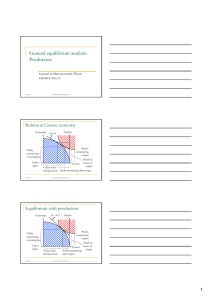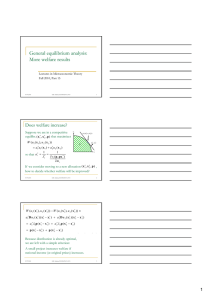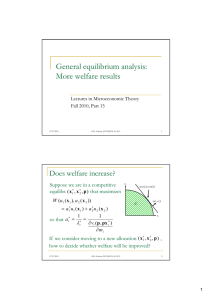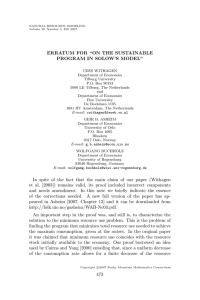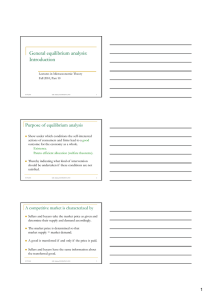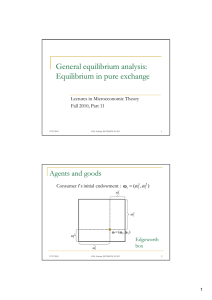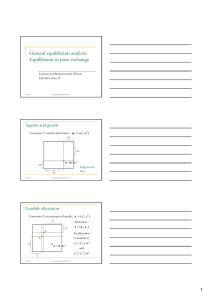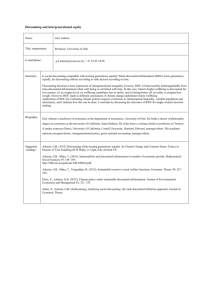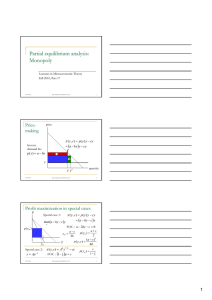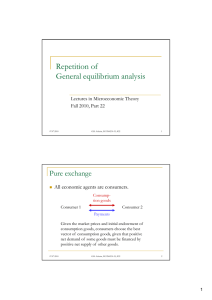General equilibrium analysis: Production Robinson Crusoe economy Lectures in Microeconomic Theory
advertisement
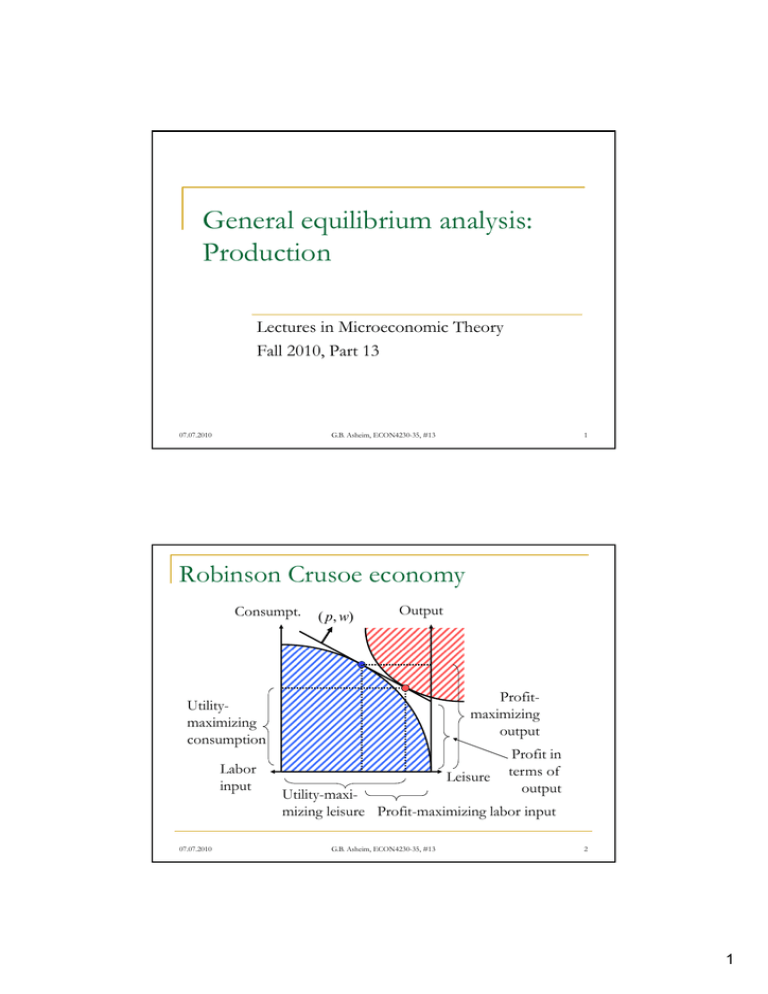
General equilibrium analysis: Production Lectures in Microeconomic Theory Fall 2010, Part 13 07.07.2010 G.B. Asheim, ECON4230-35, #13 1 Robinson Crusoe economy Consumpt. ( p, w) Output Profitmaximizing output Utilitymaximizing consumption Labor input 07.07.2010 Leisure Profit in terms of output Utility-maximizing leisure Profit-maximizing labor input G.B. Asheim, ECON4230-35, #13 2 1 Equilibrium with production ( p , w ) Consumpt. Profitmaximizing output Utilitymaximizing consumption Labor input Utility-maximizing leisure 07.07.2010 Profit in terms of Leisure Profit-maximizing output labor input G.B. Asheim, ECON4230-35, #13 3 Overview of results x12 x22 P x1 x2 p ( p1 , p2 ) x11 x12 Output Arrow-Debreu-McKenzie (1951–54) If production sets are convex, and utility functions are quasi-concave, quasi concave then an equilibrium exists. Results in two-factor two-good economies w/CRTS: (1) Increased price of one good leads to increased price of the factor that is used more intensively in the produc(Th Stolper-Samuelson S l S l theorem) h ) tion off that h good. d (The (2) Increased supply of one factor leads to increased production of the good that is more intensive in the use of this factor, for fixed output prices. (The Rybczynski theorem) 07.07.2010 G.B. Asheim, ECON4230-35, #13 4 2 1st welfare theorem holds … Consumpt. Output Labor input Leisure … even if the production set is not convex. 07.07.2010 5 G.B. Asheim, ECON4230-35, #13 2nd welfare theorem need not hold … Consumpt. Output Labor input Leisure … if the production set is not convex. 07.07.2010 G.B. Asheim, ECON4230-35, #13 6 3
